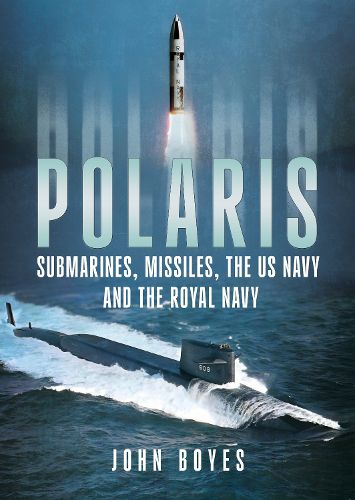Readings Newsletter
Become a Readings Member to make your shopping experience even easier.
Sign in or sign up for free!
You’re not far away from qualifying for FREE standard shipping within Australia
You’ve qualified for FREE standard shipping within Australia
The cart is loading…






The atom bombs dropped on Japan at the end of the Second World War opened the door to the nuclear age. Seeing the potential for developing nuclear energy for the US Navy, Capt. Hyman Rickover initiated a research programme that culminated in the launch of USS Nautilus, the world's first nuclear-powered submarine. Meanwhile, ballistic missile technology was developing fast, but still relied on complex liquid fuels. The US Navy partnered with the army to develop a ballistic missile for both services, but withdrew when solid fuels became a practical proposition. Under the leadership of RADM William Raborn, the US Navy set up its own project: the Polaris weapon system. In 1960, the first missile-armed nuclear-powered submarine (SSBN) left on patrol, with forty more to follow in subsequent years. Two years later, when Britain's Blue Streak and Skybolt plans were cancelled, Harold Macmillan and John F. Kennedy agreed for Polaris to be supplied to the Royal Navy.
$9.00 standard shipping within Australia
FREE standard shipping within Australia for orders over $100.00
Express & International shipping calculated at checkout
Stock availability can be subject to change without notice. We recommend calling the shop or contacting our online team to check availability of low stock items. Please see our Shopping Online page for more details.
The atom bombs dropped on Japan at the end of the Second World War opened the door to the nuclear age. Seeing the potential for developing nuclear energy for the US Navy, Capt. Hyman Rickover initiated a research programme that culminated in the launch of USS Nautilus, the world's first nuclear-powered submarine. Meanwhile, ballistic missile technology was developing fast, but still relied on complex liquid fuels. The US Navy partnered with the army to develop a ballistic missile for both services, but withdrew when solid fuels became a practical proposition. Under the leadership of RADM William Raborn, the US Navy set up its own project: the Polaris weapon system. In 1960, the first missile-armed nuclear-powered submarine (SSBN) left on patrol, with forty more to follow in subsequent years. Two years later, when Britain's Blue Streak and Skybolt plans were cancelled, Harold Macmillan and John F. Kennedy agreed for Polaris to be supplied to the Royal Navy.